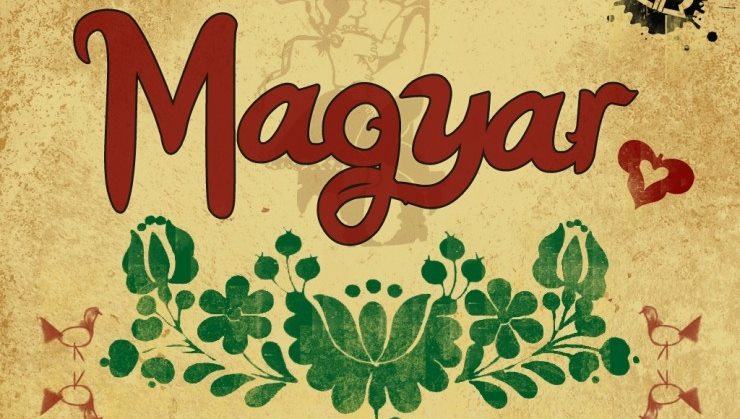Hungarian language lesson: the many ways you can say ‘move’ or ‘go’, Part 2
The poem goes on and recites even more ways the Hungarian language can describe something moving in a direction. Why the Hungarian language has so many variations to describe motion is uncertain, but it is an endless toolbox in the right hands.
Whether you want to enrich your Hungarian vocabulary, impress your Hungarian relatives or friends, or are just simply curious, we hope that you find this useful and hope that we can shed some light on this hidden gem that is the Hungarian language.
You can find Part 1 here, but now we shall continue onwards from ‘L’ all the way to the end:
L
‘lépeget’ [leːpɛgɛt]: to walk with small, frequent steps
‘lépked’ [leːpkɛd]: to stride, or to walk with slow steps
‘lézeng’ [leːzɛng]: similar to ‘kószál’; walks around without purpose or destination; loiter around
‘lohol’ [lɒhɒl]: hurrying somewhere; walking with an effort to get somewhere or catch up to someone, also figuratively; to do everything to get somewhere, to get something or someone
‘lopakodik’ [lɒpɑkɒdik]: stealthy movement as in sneaking in somewhere without noticing
‘lófrál’ [loːfrɑːl]: similar to ‘csavarog’ or ‘kószál’; to walk around doing nothing; to laze
‘lődörög’ [lɜːdərəg]: to walk around the city; very similar to ‘lófrál’; to walk without particular goals in mind, just to be around
M
‘megy’ [mɛgj]: simply means to ‘go’; generally saying that you are going somewhere (travel even), or describe someone walking by
O, Ó, Ö, Ő
‘oson’ [ɒsɒn]: to sneak; to hastily go somewhere without noise or being seen
‘özönlik’ [əzənlik]: also used to describe a flood or mud moving with extreme force; usually referred to a huge crowd going somewhere; walking determinedly
‘ődöng’ [ɜːdəng]: similar to ‘lézeng’; to walk around without any plans, but also implies a blue mood
‘őgyeleg’ [ɜːgjɛlɛg]: similar to ‘kószál’; to walk around and curiously look or peep
P
‘poroszkál’ [pɒroɒskɑːl]: maybe ‘amble’ would be the closest; generally to move around in a jogging or waddling manner with a rhythm, specifically horses (or other similar animals) stepping with their right front and hind legs at the same time and then with the left ones
R
‘robog’ [rɒbɒg]: usually some kind of vehicle (‘robogó’ is a scooter) rapidly moving somewhere while emitting a rhythmic noise; to go somewhere in a hurry
‘rohan’ [rɒhɑn]: to rush or run as fast as one can
S, Sz
‘settenkedik’ [ʃɛttɛnkɛdik]: to sneak or creep; to walk stealthily and noiselessly; sometimes even to follow someone without being noticed
‘slattyog’ [ʃlɑtjɒg]: to ‘saunter’ or walk around looking at things
‘somfordál’ [ʃɒmfɒrdɑːl]: to move in a way to avoid being in the centre of attention, sometimes after being ashamed, or move around in order to ask for something, like a dog after chewing something
‘sompolyog’ [ʃɒmpɒjɒg]: almost entirely the same as ‘somfordál’
‘suhan’ [sʊhɑn]: to run noiselessly and rapidly; almost like flying, gliding, or rather sweeping
‘surran’ [sʊrrɑn]: to sneak in a rapid manner to somewhere; interestingly, the word ‘surranó’, which comes from this word, refers to a type of combat boots
‘sündörög’ [ʃyndərəg]: similar to ‘settenkedik’ but could be used when a child, for example, is being with the parent in the kitchen in order to maybe get some leftovers or food while the parent cooks
‘száguld’ [sɑːgʊld]: ‘fut’ or ‘rohan’; to run with such speed that it is hard to see with one’s naked eye; also used for cars and would be the same as ‘speeding’
‘szalad’ [sɑlɑd]: to run or hurry somewhere, but not with full force like with ‘rohan’; also when kids are running around
‘szedi a lábát’ [sɛdi ɑ lɑːbɑːt]: literally to move one leg after the other but used to describe someone fleeing or hurrying somewhere
T
‘tekereg’ [tɛkɛrɛg]: to be away from work, home, or school and walk around aimlessly; it can be used to describe snakes moving or coiling up
‘ténfereg’ [teːnfɛrɛg]: perfectly describes how drunk people walk; unsure, staggering steps trying to balance; can also mean to be around, but in the way of others, like pets or children in the kitchen, for example
‘tipeg’ [tipɛg]: to walk with small, unsure steps, like small children, but not necessarily toddlers
‘tódul’ [tódʊl]: similar to ‘özönlik’ when some kind of fluid suddenly flows somewhere powerfully, or when a crowd moves in a similar way; could also be used to describe a stampede
‘totyog’ [tɒtjɒg]: to toddle, or walk similar to a penguin
‘törtet’ [tərtɛt]: to move through thickets like a boar, for example, or simply to walk even through barriers; noisy movement; figuratively means to achieve a career goal through any means, but it has a negative connotation in that case
U, Ú, Ü, Ű
‘üget’ [ygɛt]: to trot or lope
V
‘vágtat’ [vɑːgtɑt]: to gallop; can even be used to describe humans who are in a rush or run fast
‘vánszorog’ [vɑːnsɒrɒg]: a slow movement that takes a lot of effort to move one’s body; usually crawling or dragging a limb or body; used to describe very old people’s movements, or even dying animals
‘vonul’ [vɒnʊl]: a crowd, mass, or flock moves in one direction, usually in some order or systematically; to march
That was a total of 74 ways of describing something moving by foot, detailed in two parts of the article. This is not even all, this is just what Gábor Gyimóthy wrote into his poem.

Read also10+ English words that have Hungarian origins

Read alsoEnglish–Hungarian wordplay: Same sound, different form and meaning

Read alsoCan you ‘hit the nail on the head’ in Hungarian? 13 common Hungarian−English idiom pairs
Source: Nyelvkritika.hu, Daily News Hungary
please make a donation here
Hot news
International organization confirmed that the Paks NPP operates safe, dependable
Regime change in parking in Budapest: Parking ticket machines may be removed in 2026
Chinese CATL to begin production next year in Hungary!
Special Japanese-Hungarian storytelling collaboration in Budapest – PHOTOS
PM Orbán talked about the the war’s end in Ukraine, invites Netanjahu to Budapest – UPDATED
Shocking: Forint in free fall, historic lows against the American dollar, GBP, CHF, PLN!




